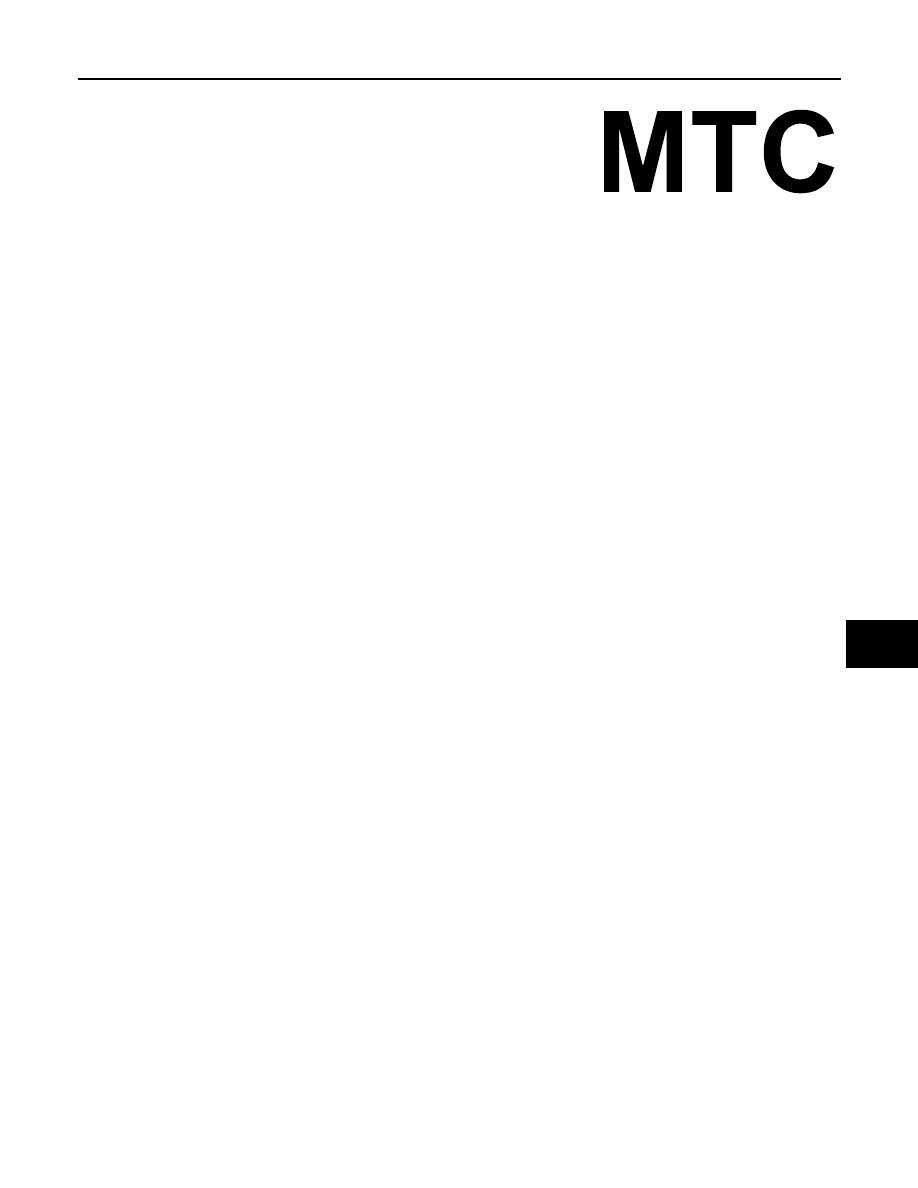Nissan Pathfinder (2006 year). Manual - part 331

MTC-1
MANUAL AIR CONDITIONER
J AIR CONDITIONER
CONTENTS
C
D
E
F
G
H
I
K
L
M
SECTION
A
B
MTC
2006 Pathfinder
PRECAUTIONS .......................................................... 4
PREPARATION ......................................................... 12
Commercial Service Tools ...................................... 15
REFRIGERATION SYSTEM ..................................... 16
Components ........................................................... 16
REFRIGERATION SYSTEM ............................... 16
Refrigerant Cycle ................................................... 17
Refrigerant System Protection ............................... 17
REFRIGERANT PRESSURE SENSOR ............. 17
PRESSURE RELIEF VALVE ............................... 18
OIL ............................................................................ 19
Maintenance of Oil Quantity in Compressor .......... 19
AIR CONDITIONER CONTROL ............................... 22
Discharge Air Flow ................................................. 26
FRONT ................................................................ 26
System Description ................................................. 27
SWITCHES AND THEIR CONTROL FUNCTION ... 27
CAN Communication System Description .............. 28
TROUBLE DIAGNOSIS ............................................ 29
CONSULT-II Function (BCM) ................................. 29